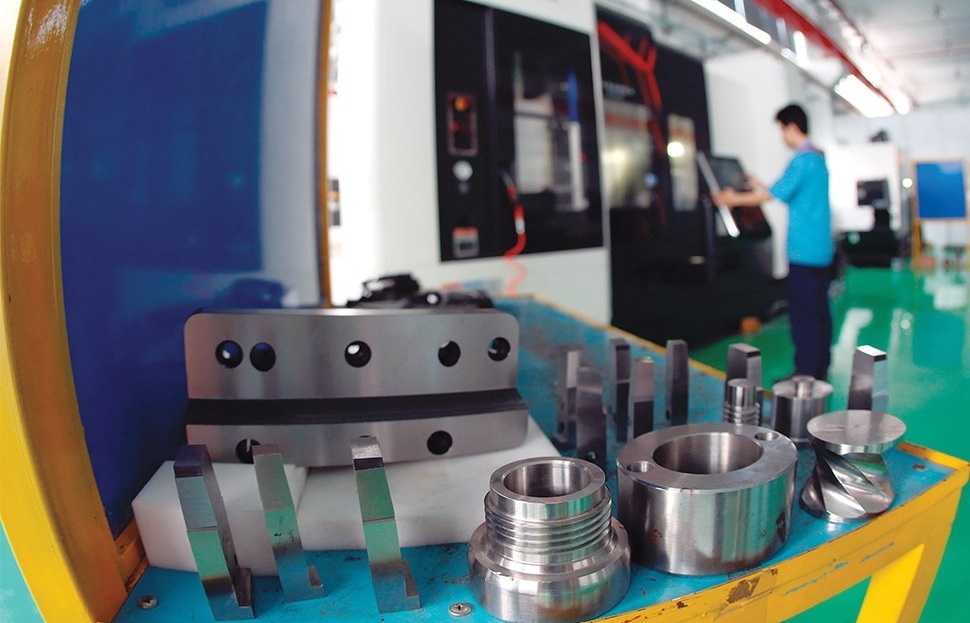Specialist loans to jack up SME growth
 |
| Specialist loans to jack up SME growth, source: mbbank.com.vn |
The Small- and Medium-sized Enterprises Development Fund (SMEDF) under the Ministry of Planning and Investment (MPI) is specifically designed for SMEs that are planning to create products in value chains or expand their business footprint. Now SMEs can tap into the new source of capital from these three banks to cover their expenses incurred prior to grant disbursement from the respective schemes.
SMEs will also enjoy preferential interest rates, as well as annual and early pre-payment fee waivers.
Phan Thanh Ha, director of the fund, said that 98 per cent of enterprises in Vietnam are SMEs and that the SMEDF aims to help innovate their products to be more competitive and environmentally friendly, and improve their technology capabilities, as well as enhance corporate governance.
“We are committed to constantly innovating and helping SMEs in Vietnam grow. With the economic outlook getting tougher, we hope that the new capabilities loan from Military Bank (MB), Saigon-Hanoi Commercial Joint Stock Bank (SHB), and BAC A BANK will be a cost-effective way to help alleviate the strain on SMEs’ cash flows, thereby encouraging them to embrace innovation and grow new sources of revenue,” Ha emphasised, adding that the fund will also assist SMEs to leverage the wide variety of government grant schemes available.
These business capabilities loans will come with the annual interest rates of 4.16 per cent for short-term loans and 6 per cent for both medium- and long-term loans.
The state fund also offers flexible funding amounts up to 80 per cent of the total investment of a business or project with the maximum duration of seven years.
Eligible SMEs must be incorporated in Vietnam and must operate in innovative technology, industry clusters, or value chains such as agricultural or food chain.
Recipients also need to satisfy the requirements of Article 6 of Decree No.39/2018/ND-CP dated 2018 on guidelines for the Law on Support for Small- and Medium-Sized Enterprises and Article 23 of Decree No.39/2019/ND-CP dated May 2019 on the organisation and operation of the SMEDF.
The move has represented the MPI’s plan on lowering financing costs for small and private businesses.
“The Vietnamese currency has largely stabilised, and while some economic indicators point to a slowdown due to the coronavirus outbreak, others highlight the continued resilience of the economy. Those factors give the Vietnamese government and local commercial banks a window of opportunity to act,” Ngo Thu Ha, deputy general director at SHB, told VIR.
Dinh Nhu Tuynh, head of MB’s SME Division, also said that the bank currently extends financing services to 125,000 SMEs nationwide, with credit balance of about VND100 trillion ($4.35 billion).
However, lenders also must keep an eye on the risks of financing SMEs, especially the added threat of non-performing loans (NPLs).
Many banks, in fact, are less willing to lend to small business because it is not as profitable as loans that more easily fit into standardised approval and repayment processes – such as credit cards and mortgages – and can be packaged into securities for sale to investors.
BAC A BANK’s deputy general director Nguyen Viet Hanh noted, “Small business loans, in fact, are often as nearly as complicated for banks to complete as large loans.”
Tuynh of MB also added that in comparison with the wholesale department that specialises in large corporations and provides a more stable and solid return, providing loans for SMEs seems to be less profitable.
Compared to the wholesale or institutional banking departments that focus on multinational corporations, which provide a more stable and profitable portfolio, providing loans for SMEs is often seen as more troublesome.
However, big banks are also suffering from NPLs. For example, SHB reported a pre-tax profit of more than VND3 trillion ($130.43 million), representing a yearly increase of 47 per cent but risk provisions soared by 66 per cent on-year to almost VND2.37 trillion ($103 million). Half of the full-year risk provision was made in the fourth quarter of 2019. SHB is among the six domestic lenders with the highest amount of sour loans, at 1.8 per cent of its total assets.
MB’s NPLs grew by VND400 billion ($17.4 million) to reach VND1.44 trillion ($62.5 million) as of September 30, 2019. Doubtful debts were estimated at around VND917 billion ($39.87 million), which is VND120 billion ($5.22 million) higher than in 2018.
Researchers at Viet Dragon Securities also cautioned of MB’s future outlook, which they claim would be impeded by potential headwinds such as high NPL formation rate and provision charges growth due to higher risk appetite.
Hanh of BAC A BANK told VIR that SMEs seeking for tailor-made loans would be asked for alternative collateral in various forms so that the loan is backed in case the borrower defaults. For example, assets used as collateral include cash, account receivables, real estate, inventory, cars, equipment, or signing personal guarantee on a case-by-case basis.
The Small- and Medium-sized Enterprises Development Fund is co-operating with several domestic banks to offer attractive loans to local businesses to help these to maintain manufacturing and business operation, while diversifying capital streams and improving competitiveness. The fund’s chairwoman Hoang Thi Hong talks with VIR’s Nguyen Huong about how the new scheme will support the business community in the country. How would the fund help answer small- and medium-sized enterprises’ (SMEs) needs?Businesses are not only interested in government funding with preferential interest, but also in diverse supporting policies that fit their actual needs. Going further, businesses are calling for more transparency in these policies and for deployment that makes them more approachable. That is why the SMEDF co-operates with banks to provide credit solutions for SMEs. Under the arrangement, MB, SHB, and BAC A BANK have to prepare counterfunding that can cover the financing needs of their SME customers. The SMEDF partners now with five banks, all of whom wield significant experience and have branch networks of wide coverage across the country. We will also shake hands with Agribank and VietinBank, so the coverage will be wider. The credit products the SMEDF provides in collaboration with these banks are favourable, probably doubling the benefits on offer for businesses. In addition to utilising the funds of the SMEDF, SMEs can borrow from the banks on a more flexible and a much easier basis. So far, the SMEDF has disbursed around VND150 billion ($6.5 million), and receivers have been performing quite well. On what funding ration has the SMEDF agreed with partner banks?We have not fixed the ratio. It will be considered on a project basis, based on the businesses. The SMEDF highlights that the loans will not exceed 80 per cent of the total investment value of a project or business plan, nor will it exceed 15 per cent of the total funds of the SMEDF (VND2 trillion or $87 million). Businesses always want to borrow as much as possible from the SMEDF to take advantage of the preferential interest rate, which is much lower than what banks offer, even after the decrease. After appraisal and evaluation, we will decide how much of the funding is provided by the SMEDF and how much is supported by banks. What impact do you think this funding will have on SMEs?Businesses’, particularly SMEs’, activities have been hit hard by the disruptions caused by the COVID-19 outbreak. These effects were more pronounced in production and manufacturing sectors like agriculture, as well as tourism and foreign trade. SMEs, which generally struggle with capital shortages and low manufacturing capacity, will be affected directly by the epidemic in every stage of their operations, from importing materials through production to sales, and will be hard-pressed to whip up the capital necessary to stay liquid or meet their financial obligations. Therefore, I am confident the preferential loans of the SMEDF and other supportive programmes will prove quite effective, and will be immense help for SMEs to maintain manufacturing and business operation and help them diversify capital streams and improve competitiveness. |
What the stars mean:
★ Poor ★ ★ Promising ★★★ Good ★★★★ Very good ★★★★★ Exceptional
Related Contents
Latest News
More News
- Trump's trade policies could shape Vietnam's economic outlook: Dragon Capital (November 15, 2024 | 16:56)
- Prioritising corporate governance for Vietnam’s sustainable growth (November 14, 2024 | 16:50)
- Vietnam eyes nuclear revival to bolster energy security (November 14, 2024 | 16:46)
- German businesses explore investments in Dong Nai (November 08, 2024 | 18:02)
- Vietnamese consumer sentiment outperforms regional averages (November 08, 2024 | 18:00)
- Exchange and interest rates forecast to remain stable after US election (November 07, 2024 | 14:04)
- Industrial real estate stocks benefit from US election results (November 07, 2024 | 13:56)
- 2024 sees $1.41 billion in fintech funding so far (November 07, 2024 | 08:13)
- Trump at 266 electoral votes, Harris at 195: US media (November 06, 2024 | 14:30)
- Hanoi targets digital and high-tech investment with upcoming event (November 06, 2024 | 13:28)





 Tag:
Tag:





















 Mobile Version
Mobile Version